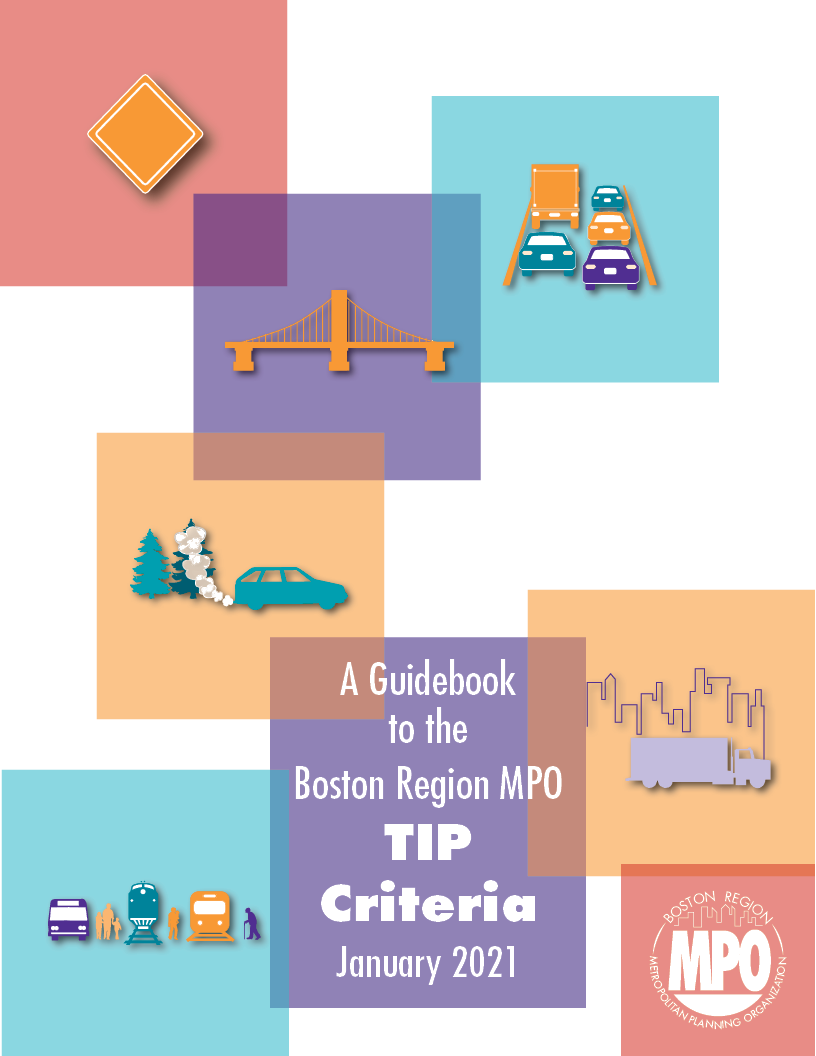

The Boston Region MPO is a Board made up of state, city, and town officials from across the greater Boston region who decide how a portion of Massachusetts’ federal transportation dollars are spent on capital improvement projects. The MPO funds transportation projects, such as Complete Street redesigns, intersection improvements, bike and pedestrian connections, and transit modernization projects through the Transportation Improvement Program (TIP). The MPO uses TIP criteria to help select projects that meet the MPO’s vision of a modern, well-maintained transportation system that supports a sustainable, healthy, livable, and economically vibrant region.
Cities and towns bring projects to the Board for consideration. The projects are scored based on criteria that measure how well they address the MPO’s goal areas—improve safety, expand multimodal mobility, increase equity, support environmental sustainability, enhance economic development, and support modernization and maintenance of the transportation system. These criteria incorporate the MPO’s goals established in the Long Range Transportation Plan, Destination 2040, as well as public input and best practices of other regional and state agencies. The criteria are periodically updated to reflect the changing needs and priorities of the region, with the most recent update approved by the MPO board in October 2020.
Call out box: The MPO has six investment programs.
Read the Investment Programs Brochure to learn more!
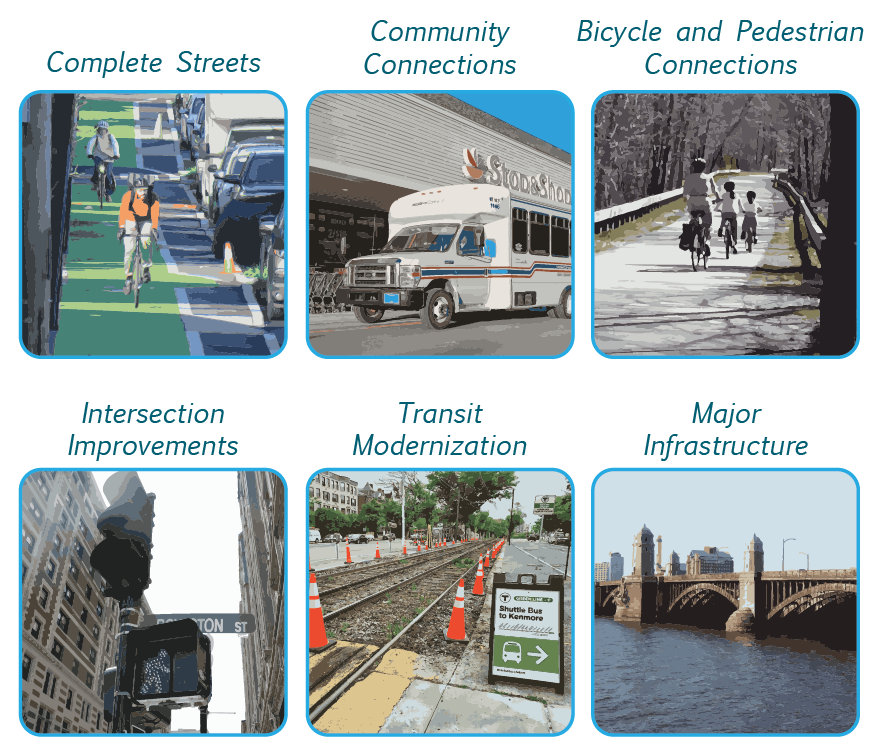
Projects receive points based on the extent to which they meet each criterion. The more points a project scores, the more likely it is that the Board will fund the project. The MPO funds projects based on its Investment Programs, and projects compete against other projects within each investment program. Because the demand for funding is routinely greater than the limited funding available, a project’s score plays an important role in helping the Board prioritize which projects to fund in any given year.
Although the MPO approves all projects that receive federal transportation funding in the Boston region, the criteria only apply to the projects funded using the MPO’s Regional Target funds. Use of the criteria is also limited by the availability of project data and the time the MPO has to consider projects for funding during the annual TIP process.
These limitations are why the criteria are just one factor among many the MPO considers when selecting projects for funding. The MPO also takes into account project cost and readiness, and the distribution of federal funding across the region. The MPO periodically updates the TIP criteria to ensure that they continue to be a useful resource in its project selection decisions and to keep pace with the changing needs of the region.
The remainder of this guidebook highlights the major changes to the criteria that were approved by the MPO Board in October 2020. These changes are organized by theme or mode of transportation. You can learn more about the specific criteria in the TIP methodology.
You can watch the TIP Program Manager discuss an overview of the TIP in the TIP Open House video.
To make the criteria easier to use and understand, the MPO converted to a 100-point scale for the scoring system, a change from its prior 134-point scale. This allows point values to be translated easily into percentages—a more natural way for everyone to understand project scores.
The new TIP criteria are specific to each investment program and focus more on the unique elements of each type of project rather than using the same set of criteria for all projects. While there is still a significant amount of overlap in the criteria across the investment programs, the added nuances in certain criteria within an investment program allow for a more tailored assessment of each project type.
The MPO also created new criteria to score projects within the Transit Modernization Program, a new priority for the MPO and a program through which the board aims to spend more than $5 million every year to maintain and update the region’s transit systems.
The MPO strives to ensure that its projects improve transportation outcomes for all people, regardless of their background, prioritizing projects that do so for the MPO's equity populations. In support of this effort, the new criteria integrate equity into every MPO goal area. Projects now receive progressively more points based on
[call out box text: Equity populations include people with low incomes, people of color, people who identify as Hispanic, people with limited English proficiency, people with disabilities, older adults (age 75 and older), and young people (age 17 and younger).]
The new criteria measures a project’s impact on the people living in the project area rather than solely on the number of people who live nearby. For example, if a project reduces air pollution, it receives more points if the project has a higher share of people who belong to equity populations within the project area.
This new approach applies an equity multiplier to criteria that the MPO has identified through public outreach and data analysis as critical transportation needs or where there exist disparities for equity populations. Each project’s multiplier is based on the percentage of the population in the project area that belongs to the MPO’s equity populations relative to their region-wide averages—the higher the percentage, the higher the multiplier.
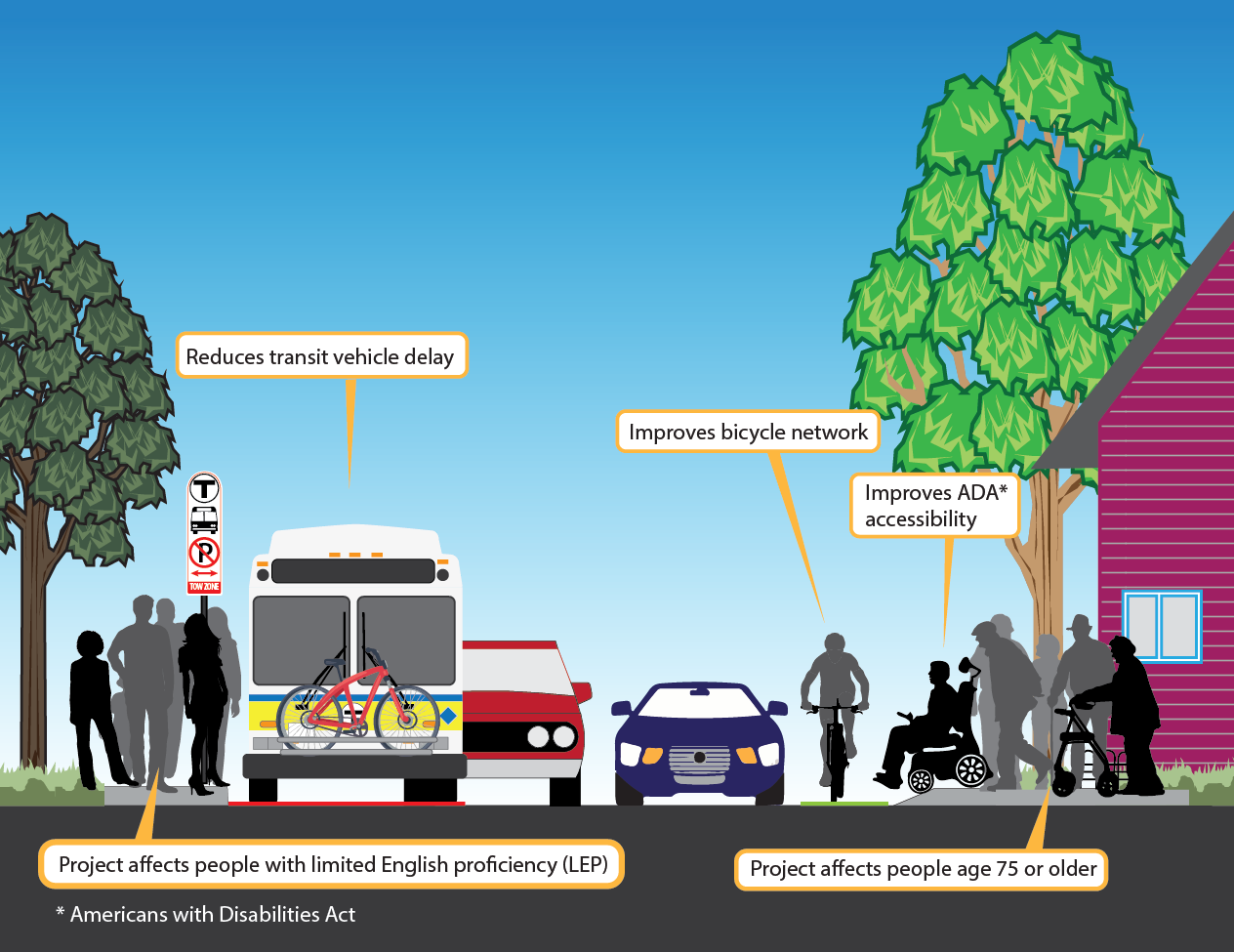
The MPO strives to ensure that all modes of transportation are safe. To that end, the MPO revised the Safety criteria to
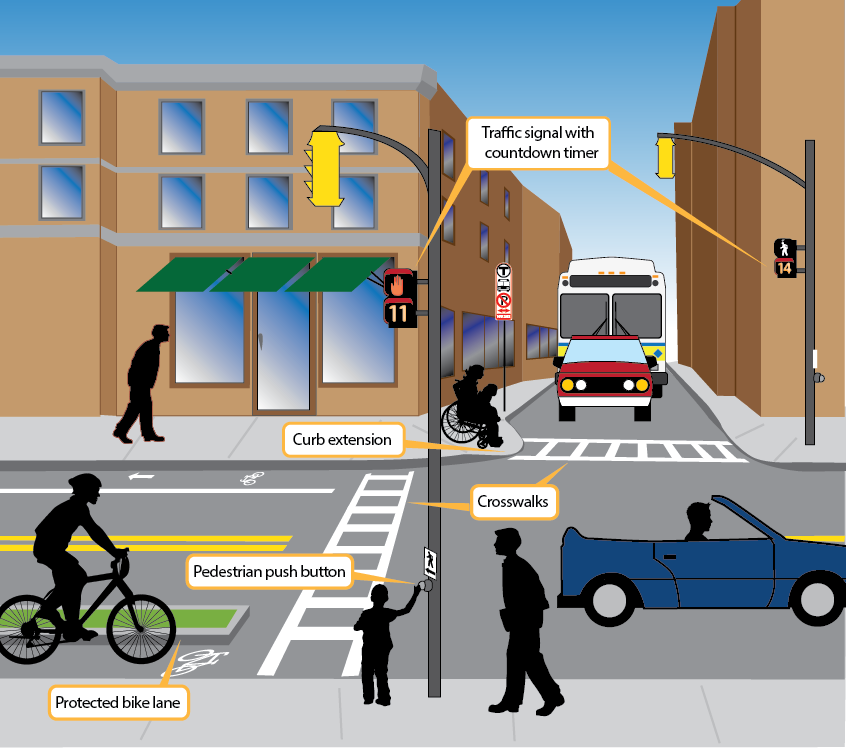
The MPO’s sustainability goal is to create an environmentally friendly transportation system. To help achieve that, the new criteria
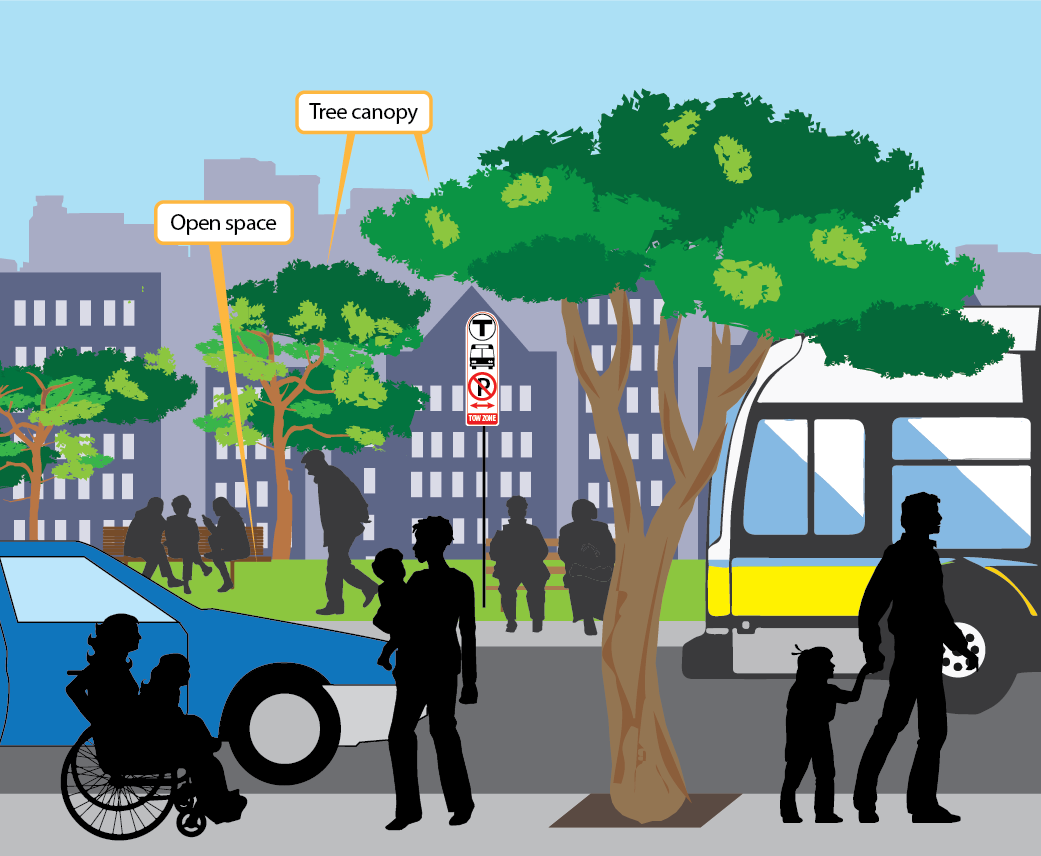
The MPO aims to maintain and modernize the transportation system and plan for its resiliency. To support that, the new criteria
[call out box text: Resiliency in transportation planning refers to building and maintaining transportation infrastructure to meet the increasing negative impacts of climate change. Extreme weather events, sea level rise, and heat waves can damage and disrupt the transportation system. Resilient transportation incorporates strategies to protect the system against climate impacts.]
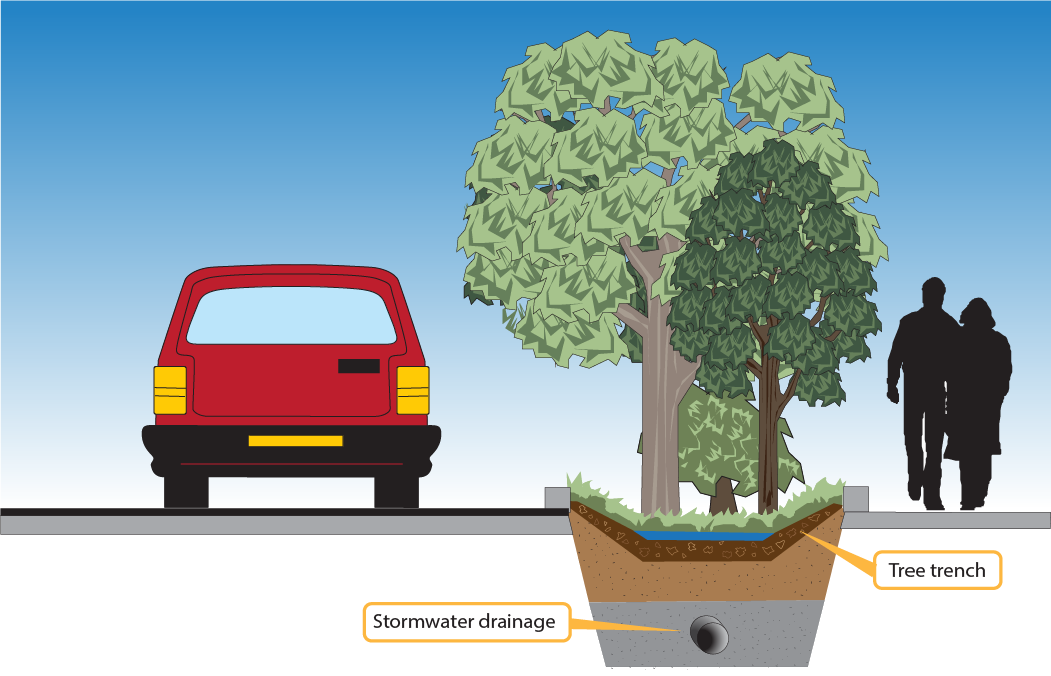
The MPO aims to improve the reliability of public transit and make transit a viable transportation option for more people within the region. In support of those goals, the new criteria
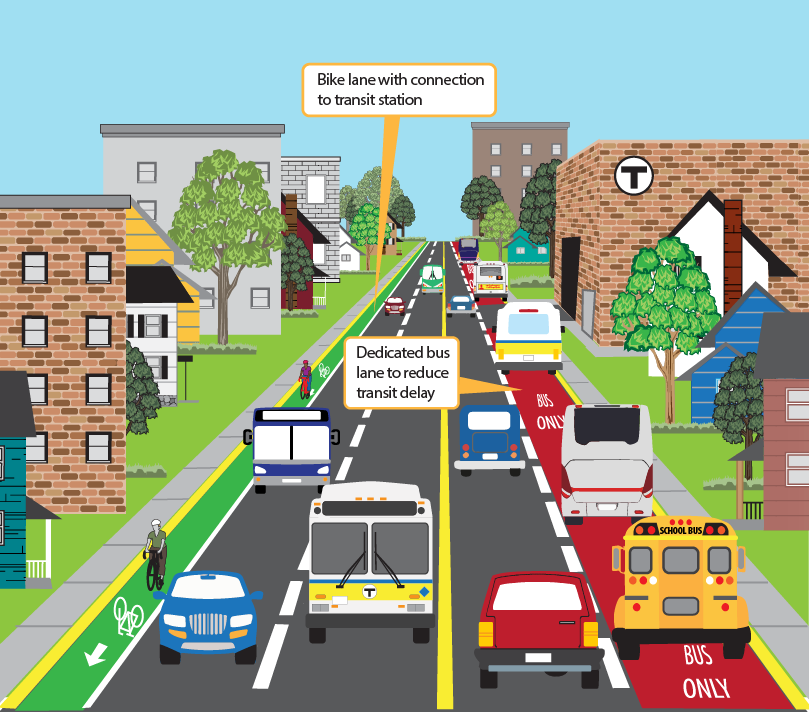
The MPO aspires to increase transportation options across all modes, with a specific focus on expanding active transportation in the region. To that end, the new criteria
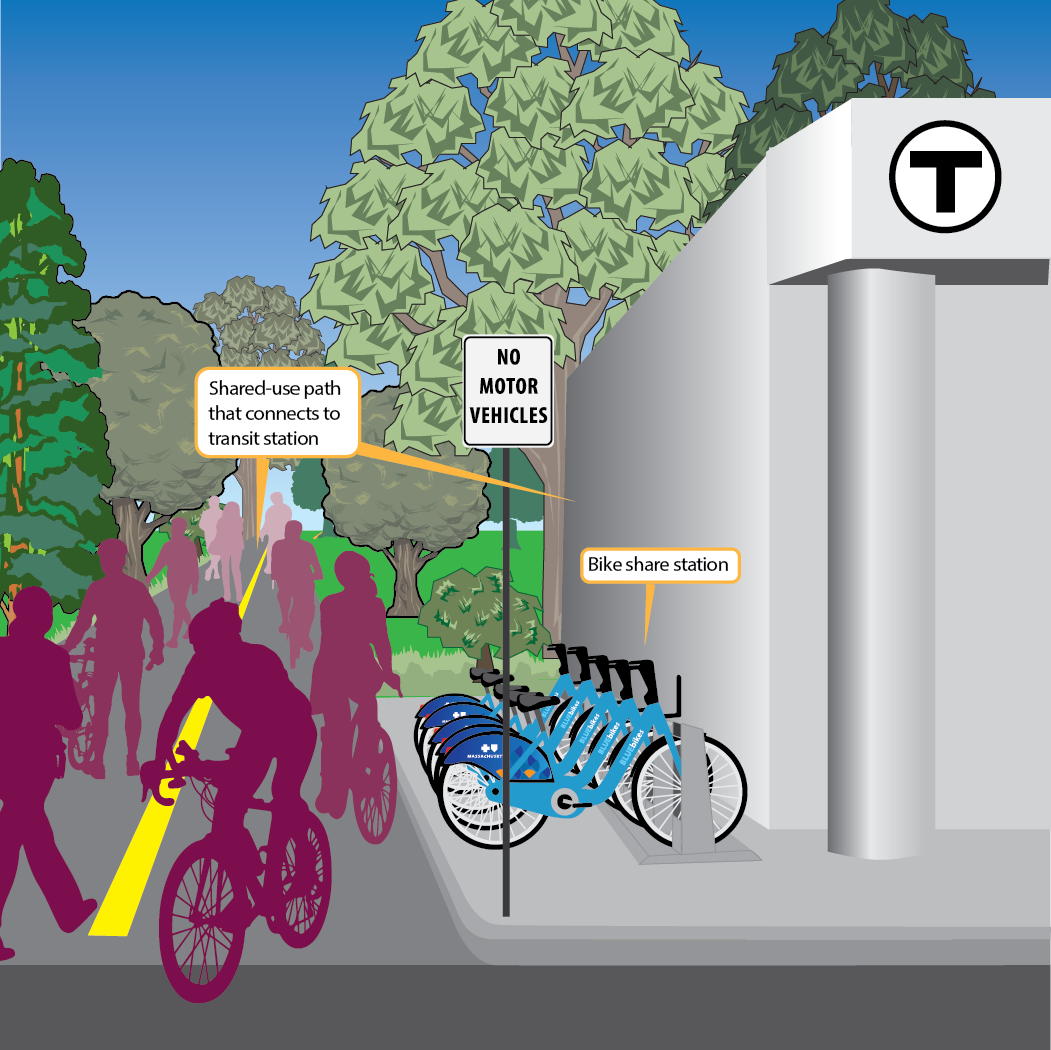
The MPO works to ensure that the region’s transportation network provides a strong foundation for economic vitality. In support of that, the new criteria
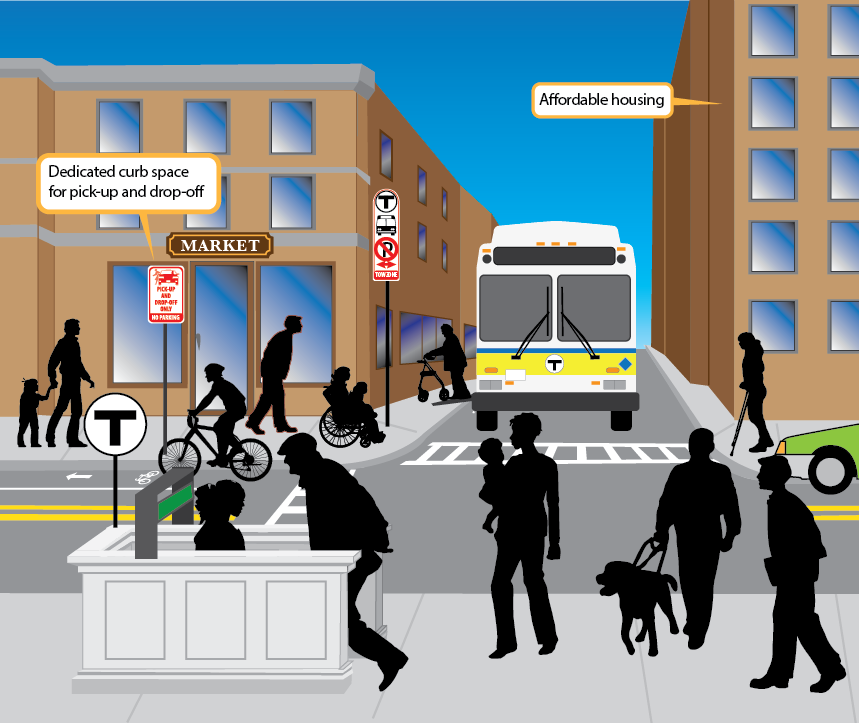
Learn more about the Boston Region MPO by visiting our Frequently Asked Questions web page.
Keep up with MPO activities by subscribing to our mailing list. In email preferences, choose the kinds of messages to receive from the following selections: MPO notices, MPO meeting reminders, TransReport news bulletin, Transportation Equity notices, and Regional Transportation Advisory Council notices.
Follow us on Facebook, Twitter, Instagram, and LinkedIn, and subscribe to our YouTube channel.
Matt Genova
Transportation Improvement Program Manager
857.702.3702
Kate White
Public Outreach Coordinator
857.702.3658
You are invited to participate in our transportation planning process, regardless of your race, color, national origin (including limited English proficiency), religion, creed, gender, ancestry, ethnicity, disability, age, sex, sexual orientation, gender identity or expression, veteran’s status, or background. Read our full notice of rights and protections at www.bostonmpo.org/mpo_non_discrimination.
To request special accommodations, or if you need this information in another language, contact the MPO at 857.702.3700 (voice), 617.570.9193 (TTY) or civilrights@ctps.org (please allow 14 days).
Español (Spanish) - Si necesita esta información en otro idioma, por favor contacte la Boston Region MPO al 857.702.3700.
简体中文 (Simplified Chinese) - 如果需要使用其它语言了解信息,请联系波士顿大都会规划组织 (Boston Region MPO) 《民权法案》第六章专员,电话 857.702.3700.
繁體中文 (Traditional Chinese) - 如果需要使用其他語言瞭解資訊,請聯繫波士顿大都會規劃組織(Boston Region MPO)《民權法案》第六章專員,電話 857.702.3700.
Kreyòl Ayisyen (Haitian Creole) - Si yon moun vle genyen enfòmasyon sa yo nan yon lòt lang, tanpri kontakte Espesyalis Boston Region MPO Title VI la nan nimewo 857.702.3700.
Português (Portuguese) - Caso estas informações sejam necessárias em outro idioma, por favor, contate o MPO da Região de Boston pelo telefone 857.702.3700.